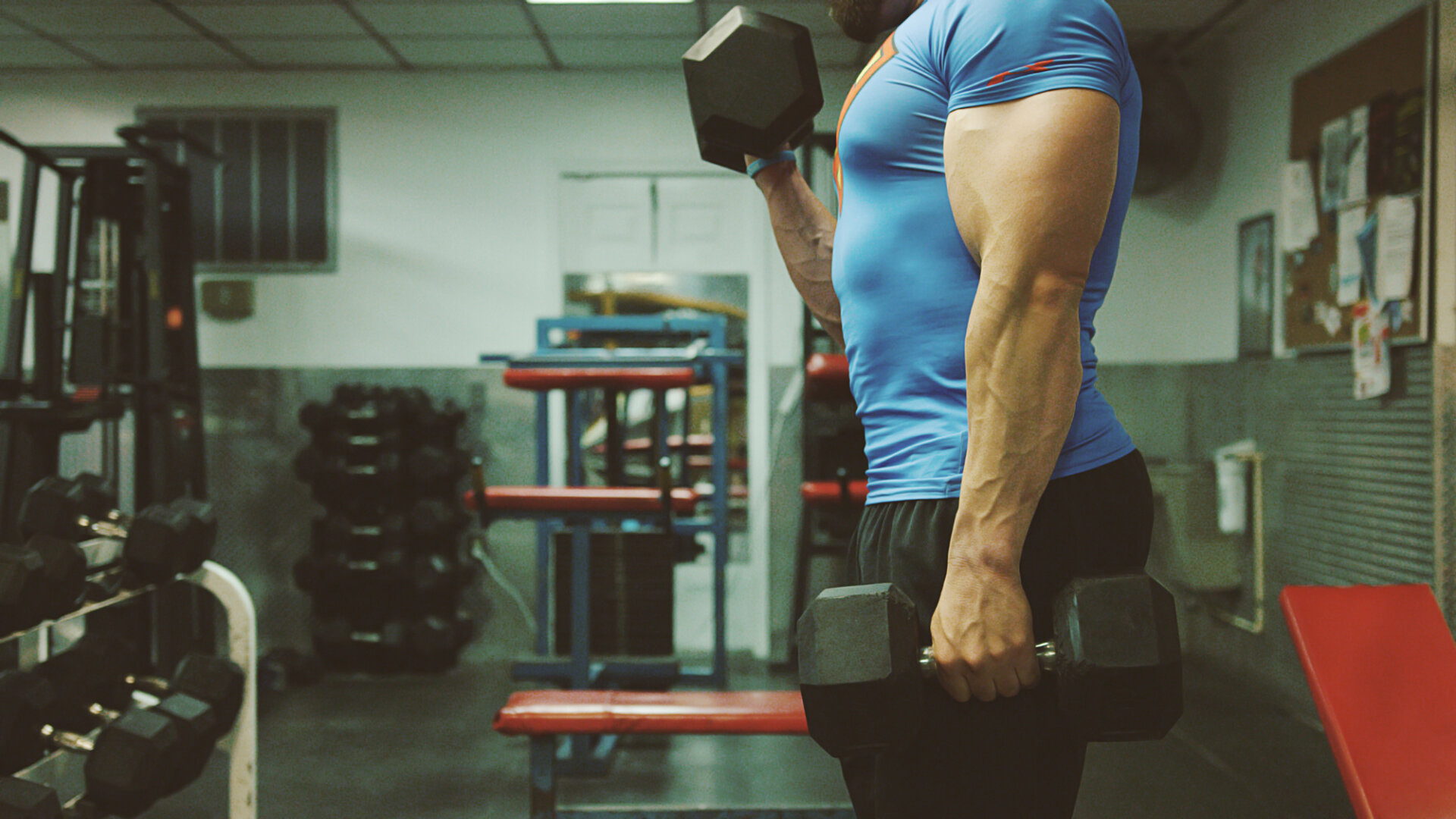I’ve talked about grandpa strength before—that is, the ability to heave a car engine across the garage in a fit of rage—and how to achieve it. Another hall mark of grandpas is their forearms. Typically, at least in my case, his forearms had some shoddy, old school tattoos from his time in the military. Not only that, his forearms were jacked. The rest of him didn’t necessarily look jacked, but you could tell he was strong because his forearms looked the part.
And how do you get that? By having a strong grip. So we’re going to go over different exercises to get you there.
Reverse Curl
This is a simple but a brutal one. It’s just like a normal curl, except you use an overhand grip and curl as normal. Key points:
- Use less weight since it’s not an advantageous position
- Mind how you grip the bar. A straight bar might be uncomfortable, especially if you don’t have much wrist mobility.
- Your best option is to opt for an EZ bar. Avoid moving your humerus, if you can help it. The goal is to work the forearms in conjunction with the biceps.
As for variations, I have two favorites. The first is to use an EZ bar attachment and put it on the low pulley of the cable machine, like you see in the video.
Not only that, but you can also perform the movement with dumbbells as a hybrid. Curl the weight up as normal, pronate the forearms, and lower it.
Wrist Roller Variation
I’m sure you’ve seen this gem. Usually, there’s a PVC pipe with a rope attached at one end, and the other end of the rope is tied to a ten pound plate.
To use it, you hold your hands out in front and roll the weight from the bottom to the top. Lower it, and roll it up the opposite way.
If you want to make a device like this, you can buy the equipment from a hardware store and use the plates at your gym. If you are like me, and don’t want to do such a thing, you can easily replicate the motion with a bar. In the video, I’m holding the bar like I would at the end of a deadlift lockout.
Then, for time, I roll the bar towards me. After the time is up, I roll it away from me. If you’re new to this, try for 10-15 seconds.
Pronation and Supination
Often not trained by itself, these two motions are integral to a great grip as well as overall forearm development.
In the video, I am using a device specifically made for grip work, but you can use anything as long as it’s long and top heavy. To make it harder, move your hand away from the weight. To make it easier, move it closer, like I did in the video. As always, work within your range of motion; don’t go too far one way or the other.
Other options: hang your wrist off the edge of a bench, or keep your arm free standing.
Dynamic Pinch Lifting
I’ve mentioned pinch lifting before. And I swear by it. But if you want to take it to the next level, you can make it more dynamic. If you participate in combat sports or grappling in general, this is especially useful for you. After all, in such sports, you’re grabbing after moving targets. As such, grabbing moving weights is a better way to train that in the gym setting.
For exercise one, it is just a circular pass around your body. I like to use a stack of weights for this because of the added pressure it takes to keep the weights held together. It’s pretty straight forward. Just pass them in front of you and then behind you.
The next exercise is a simple one, too. The goal is to drop the weight plate and snatch it with the other hand before it hits the ground. And repeat this. You can use more body english or localize it to your arms only.
Last, we have an odd one for the pinch section. You literally hold the plates and slam them into the ground. The goal is to not drop them.
Wrist Flexion and Extension
This is a classic. And it’s one of the easiest moves you can do. You simply flex your wrist, for reps. Then, you pronate your hands and extend them upwards for reps.
Conclusion
As always, you want to start conservatively on some of these. For the pinch grip work, I like to add those on to the end of my deadlift days to work my grip out even more. For maximum use of your time, start off with two sets, at first. For reps anywhere from five to ten is a good starting point. From there, you can increase the sets and reps. When you get particularly adventurous, increase the load.
For the rest of the moves, I like to add them on to the end of my arm days. As an example, you can use the flexion and extension as a finisher. For maximum benefit, superset them. With these, you’re not working with the hands directly, so you can hammer out a lot of volume with them. 12-15 reps for three sets is a good starting point. And to finish it off, you can perform the rolling motion for three sets of 15-20 seconds both ways. As for the reverse curls, I like to do those as part of the main portion of arm day. Simply substitute another curl variant with it, or add it in addition to everything else.
Finally, a good set of forearms can make a good set of arms look great, leading to more impressive upper body. Not only that, there was an interesting study done looking at the link between grip strength and risk for heart disease. If you take a look at the link in the reference, the risk is obviously lower. Of course, correlation doesn’t equal causation. But like our grandfathers show us, grip strength leads us to assume at least a couple of things—namely, the person is physically active, and that they were physically active for a good portion of their life. So while grip strength alone might not be indicative of heart disease risk, it certainly is part of a total package of physical health.
References
- LeWine, M. H. (2016, September 08). Grip strength may provide clues to heart health. Retrieved July 10, 2017, from http://www.health.harvard.edu/blog/grip-strength-may-provide-clues-to-heart-health-201505198022
- Leong, D. P., Teo, K. K., Rangarajan, S., Lopez-Jaramillo, P., Avezum, J. R., Orlandini, A., . . . Prospective, I. N. (2015, July 18). Prognostic value of grip strength: findings from the Prospective Urban Rural Epidemiology (PURE) study. Retrieved July 10, 2017, from https://www.ncbi.nlm.nih.gov/pubmed/25982160
Link to the actual study discussed in the Harvard blog above

